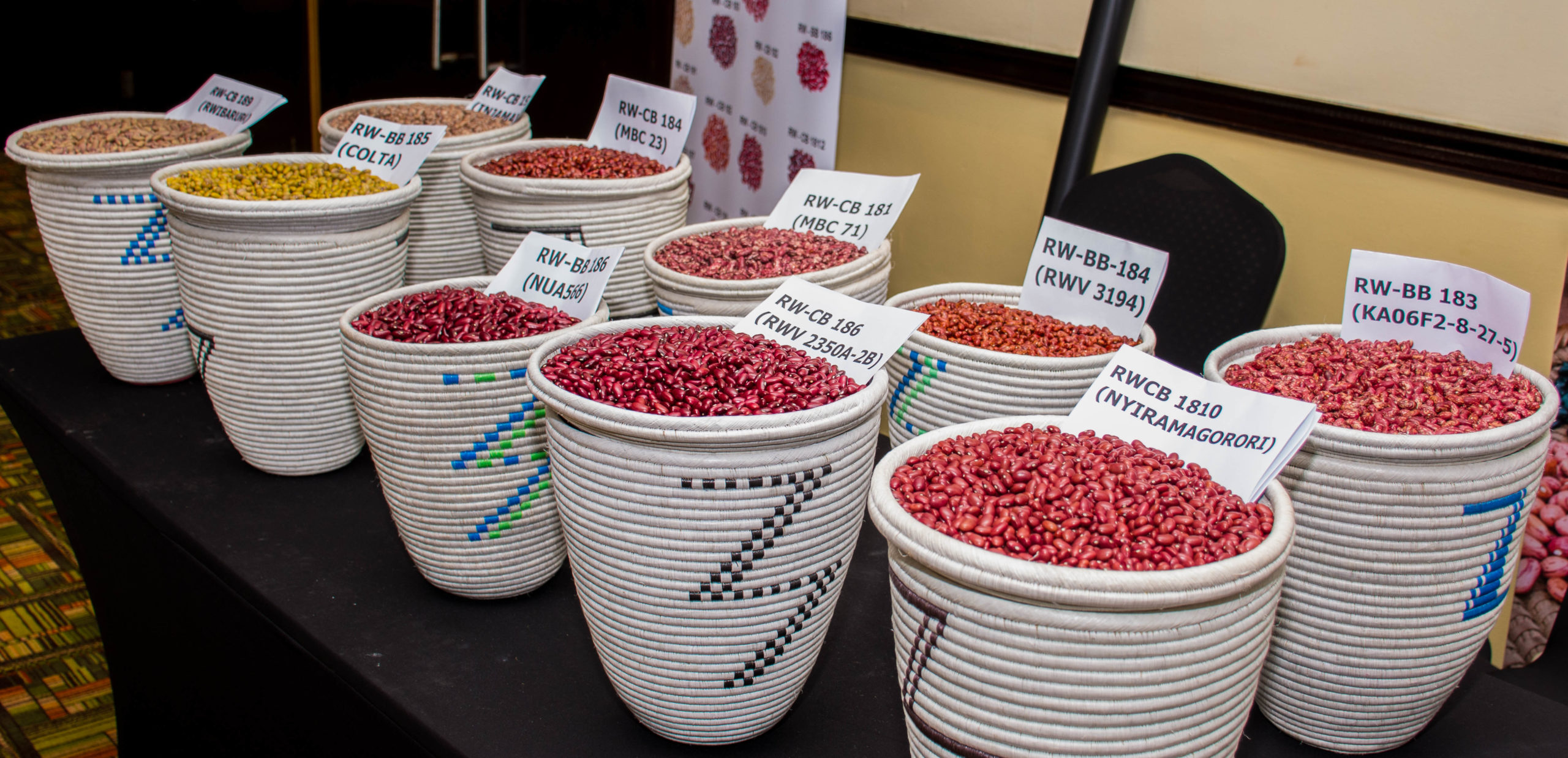25-29 October, Kigali. The Pan Africa Bean Research Alliance (PABRA) joined various plant breeding professionals, private sector players across Africa for the second edition of the Africa Plant Breeders Conference. The hybrid event was held in Rwanda where delegates joined both in person and virtually. The theme this year was “Accelerating Genetic Gains in Plant Breeding for Resilience and Transformative Food Systems and Economic Growth in Africa”
The PABRA parallel event titled “Partnership for impactful breeding- The Pan-Africa Bean Research Alliance’’ was a celebration of twenty-five years of impactful research and innovation Most of the speakers reiterated the gain made through the unique partnership that has brought comparative advantage in the network, a factor that can be borrowed in the upcoming One CGIAR structure as a model being cognizant of the fact that PABRA is celebrating 25 years and One CGIAR 50 years of research. These transitions are major milestone for both.
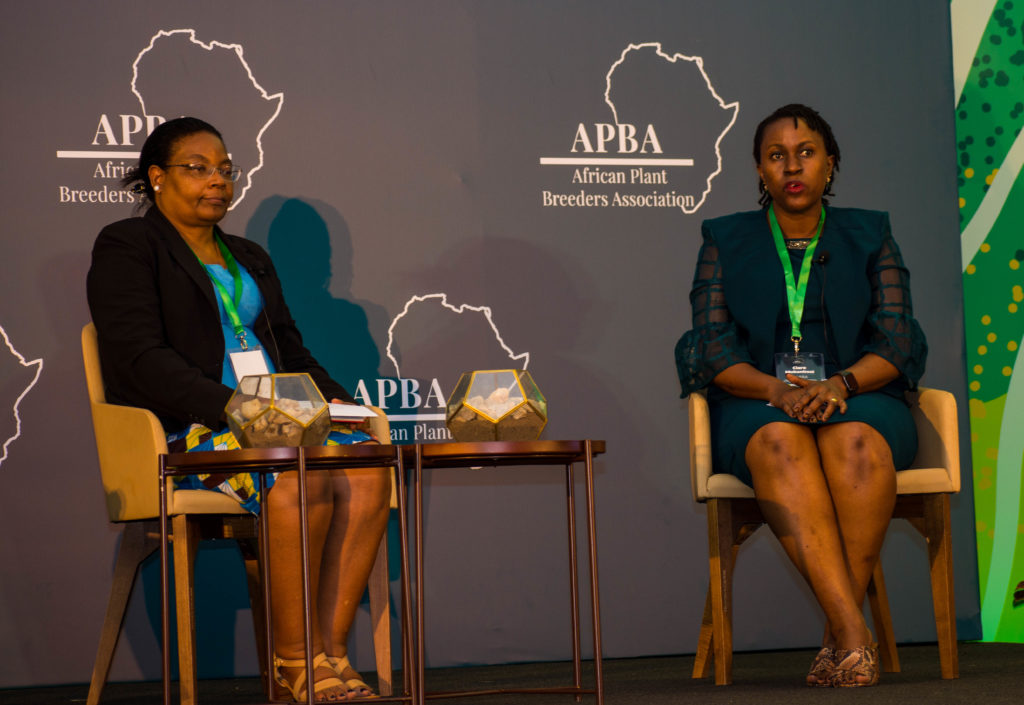
Photo 1: Dr. Clare Mukankusi during a panel discussion at the conference
Jean Claude Rubyogo, Director PABRA, in his opening remarks gave a brief history of PABRA over the 25 years and mentioned that PABRA contributes to 8 out of the 17 Sustainable development goals. He emphasized that economies of scale on the sharing of germplasm at the regional scope a fact that was emphasized by Dr. Clare Mukankusi, Global Bean Breeder at PABRA in her presentation
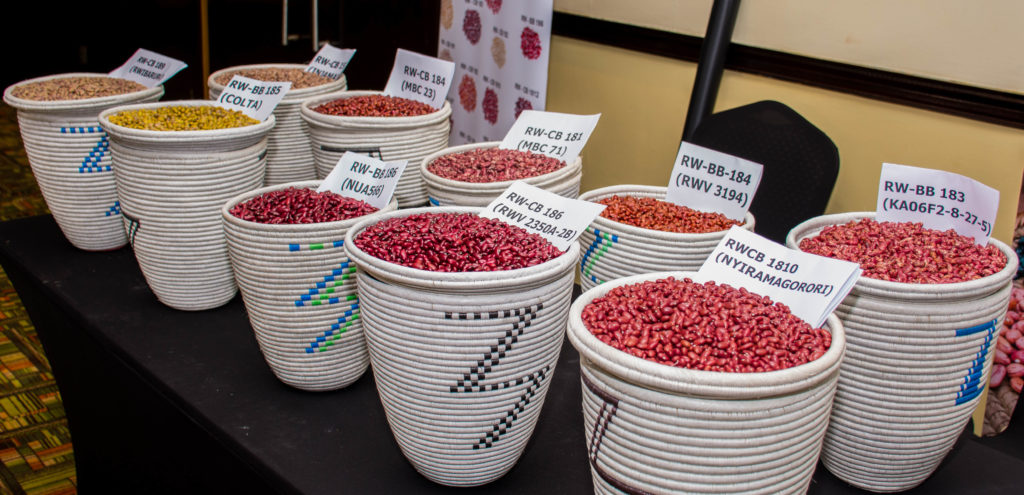
Dr. Clare Mukankusi sharing the strategic breeding partnership model by PABRA.
Dr. Rob Bertram, Chief Scientist, Bureau for Resilience and Food Security (USAID), in his opening remarks lamented the trends that are still holding back some progress in genetic gain. ’’Sub Saharan Africa still has a low rate of varietal replacement, but the farmers are excited if they get hold of varieties that work for them since some of them still hang on and grow old varieties that are more than 20 years.”
Its great to see the fundamental change in the varietal replacement in the wake of climate change, because of the biotic and abiotic stresses are changing hence the need for resilient agriculture. Various funders such as USAID, DFID, GIZ, BMGF in the past five years have recognized and are collaborating to strengthen crop improvement in one CGIAR. The three-prong stool is about prioritization, modernization and implementing partnerships with the NARs, a key factor that PABRA is already practicing.”
The PABRA model recognizes that research is not built on a silo but on strong collaboration and synergies. “When there is strong research partnership, there is great adoption and diffusion of new varieties by the farmers. We need to measure genetic gains in the farmers’ fields and the average area weighted for the varieties in the field. The importance of prioritization of crops by geography and the product profiles to match with the various scenarios is a great move.’ He added.
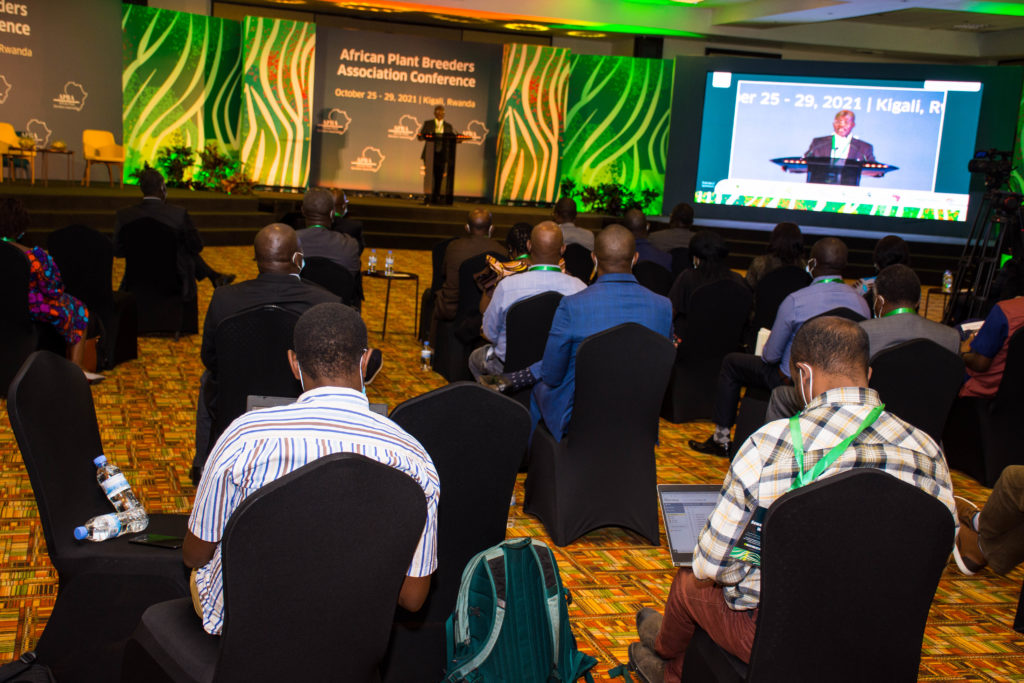
Participants at the conference during the opening.
The bean programme through PABRA is a great model as beans are affordable quality diets, nutritious, gender driven. The complementary and regional approach in the work at research and economic levels provide great synergies including seed laws shared across countries in the generation of public goods. PABRA is unique because of the sustained ownership with the NARS and the support built in the complementarities and the synergy
Dr. Bertram marveled at the case of the yellow bean story in Tanzania where using DNA classification was really a game changer in the varietal replacement. He acknowledged the synergies across the donors as vital because the investments made by the various donors count especially the Canada and Swiss government support.
“Let’s continue to sustain the unique funding arrangement between the funders. With the one CGIAR, let us push for an open eye integration and break the silos that we will prevent working together linking global science to regional, national and farm scale systems outcome.’’ He concluded.
Juan Lucas – Director General & Global Director for Partnerships and Advocacy, CGIAR, commented that was what PABRA has achieved in the 25 has been a dedication that involved partnerships across the bean landscape. “PABRA at 25 and One CGIAR at 50 is a clear indication of the great collaboration with various partners including private sector. The current One CGIAR strategy, has been able to bring impact across the five focus areas.
This is an example of how to maximize the use of resources to greater impact. Sharing across the countries through the networks. Understanding markets, involving private sector partners, universities on board and the development of new products,
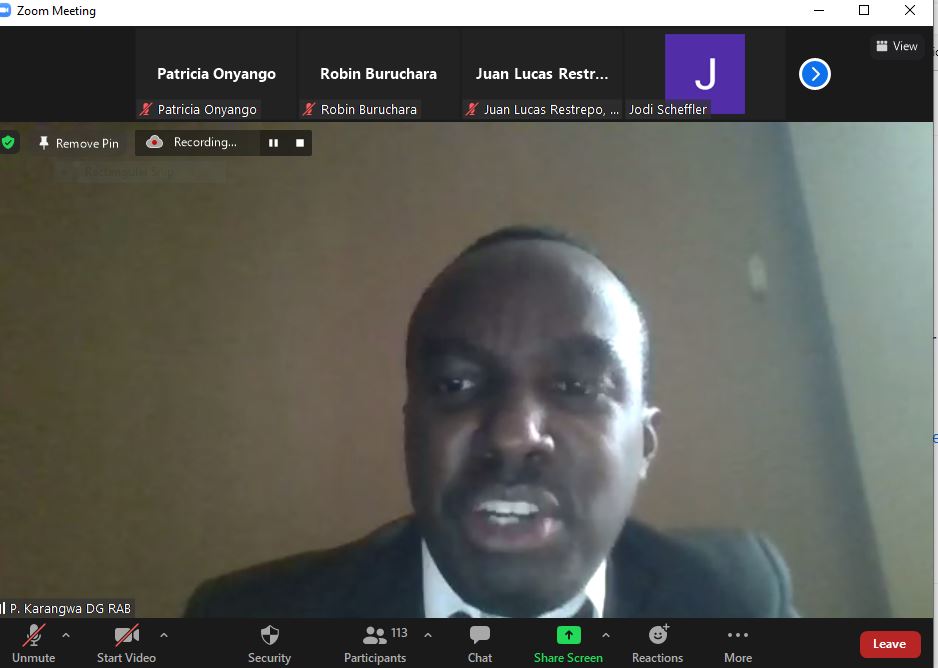
Dr Patrick Karangwa, director general RAB makes his presentation during the webinar
Dr. Patrick Karangwa, Director General – Rwanda Agriculture & Animal Resources Development Board Presenting on the Past, Current and Future Bean Research and development partnership in Rwanda observed that the partnership between RAB and PABRA has worked well. He added that Rwanda is the highest consumers of beans…beans with matoke, beans with cassava, etc. Extension services need to be strengthened more as there is still low productivity of less than 1 ton per hectare in the country. We need to see what else we can have the farmers. Thank you for the partnerships to make significant impact in the country the potential remains very high.
An example of the PABRA model has been applied across countries in the network. Sharing the Zimbabwe experience, Shylet Tsekenedza added that under the PABRA framework, Zimbabwe has the received germplasm from the PABRA Alliance. This has helped the country come up with other bean market classes other than sugar market class. An example is their recognition through the Robert Mugabe Award for the commercialization of bean varieties – Protea, a variety high in iron in the country. This was a joint effort between research and seed companies to farmers. Gendered product profile means that everyone participates in the varietal development, a move that takes to account the various research preferences of the clients.
Mr. Elvis Rwema, the Chief Executive Office, Best in Rwanda Group (BRG). mentioned that the partnership at the national level exporting premium dry beans. Together with the partnership with RAB and PABRA we access some of the best materials that our contracted farmers grow, giving us premium products. The seed systems and market needs strengthening and breeding of demanded beans would be key to adoption of new seeds, Seed and grain producers should be supported to access affordable seed and link farmers to these seeds.
Jeff Ehlers from Bill & Melinda Gates Foundation in his remarks congratulated PABRA on the model and was proud to invest in this partnership. He admired the aspect of synergies in the projects and emphasized that having an inclusive network to work more in the partnership. NARS and the evolutions of PABRA has been impactful network not just a research platform. “As we think of future models with the upcoming one CGIAR, should be more democratic and collaborative. NARS has more capacity now and ability to do trialing at the Phenotyping, the special capacities within NARS and CGIAR expertise should be complementary. Demand led breeding is a nod from me because of the gains derived. PABRA has evolved through a self-improvement journey, and we need to share how we can improve further. We wish to see this model continue in the one CGIAR.” he said.
Dr. Eric Huttner, Research programme Manager for Crop at the Australian Centre for International Agricultural Research (ACIAR) commented that the Australian govt has six areas of focus in its agricultural research investment, we address the challenges of food security and poverty reduction, climate and management of natural resources, human nutrition and health, women empowerment & gender equity, the development of equitable and inclusive value chains, and capacity building. “The logic of my programme is to sustainable productivity particularly crop improvement. Improved varieties are a great contributor to global food systems. The partnership with the University of West Australia is really a good example of the support of crop improvement through the fast-cooking time project.” He said. He noted that the last 25 years have been great on the network, the work is evolving and so is the role of the funders, and there is need to adapt.
‘PABRA is very much aligned to the feminist strategy of Canadian govt. The adaption to climate change and biodiversity, the adaption to changing global landscape, the recognition of farmers’ needs through the demand breeding and the bean corridor is a good example of how this partnership is quickly adapting.’ Hanif Pabani, First Secretary, Pan-Africa and Regional Development, Canadian High Commission-Kenya commented.
Michel Evequoz, Senior Advisor, Swiss Agency for Development & Cooperation (SDC) reported that the Swiss Agency is happy by the achievements of PABRA and has bore a lot of fruits. He thanked all the collaborators for the successes and achievements thus far. “SDC will support the One CGIAR on the breeding frontier for a diversified crop system.” He concluded.
In concluding remarks, Dr. Joe Tohme thanked all the speakers and the funders for their immense contribution. He was cognizant of the fact that the twenty-five years the cocreation with the various partners and funders have been a continuous change. A great transition that we look forward to the next 25 years. The good lesson that needs to be built on and improved to other crops.
The workshop saw the attendance of over 100 participants logged in, setting a record for that day.

